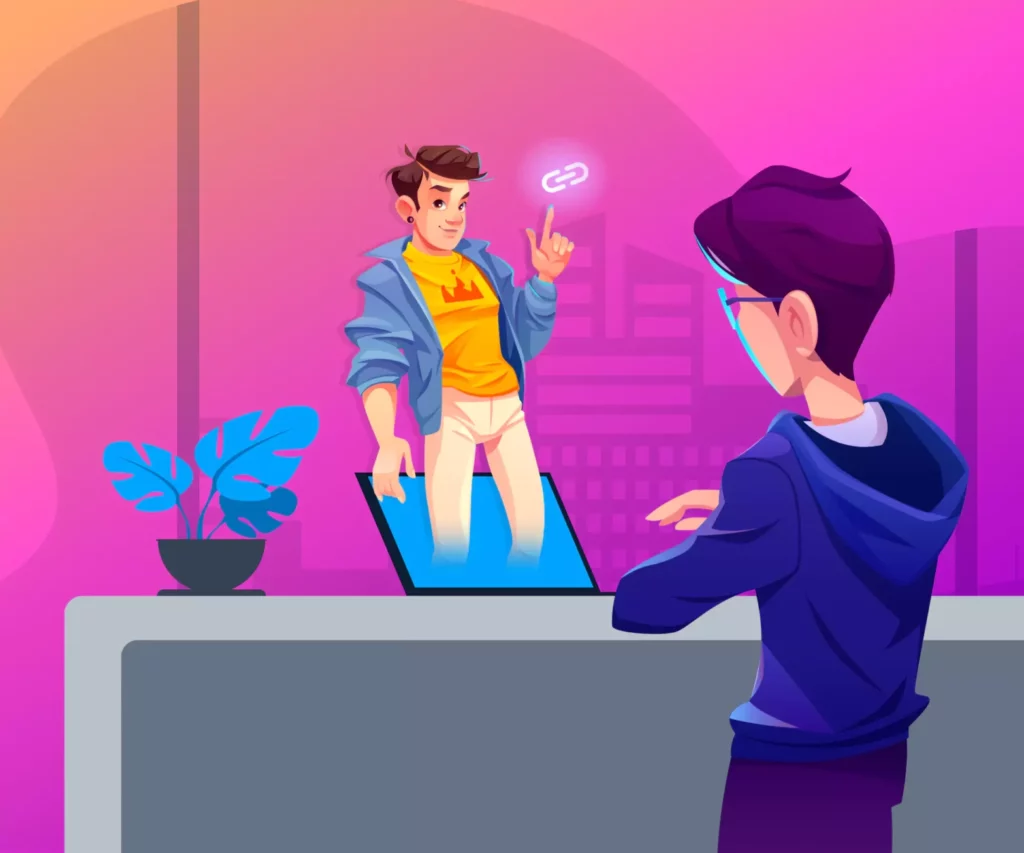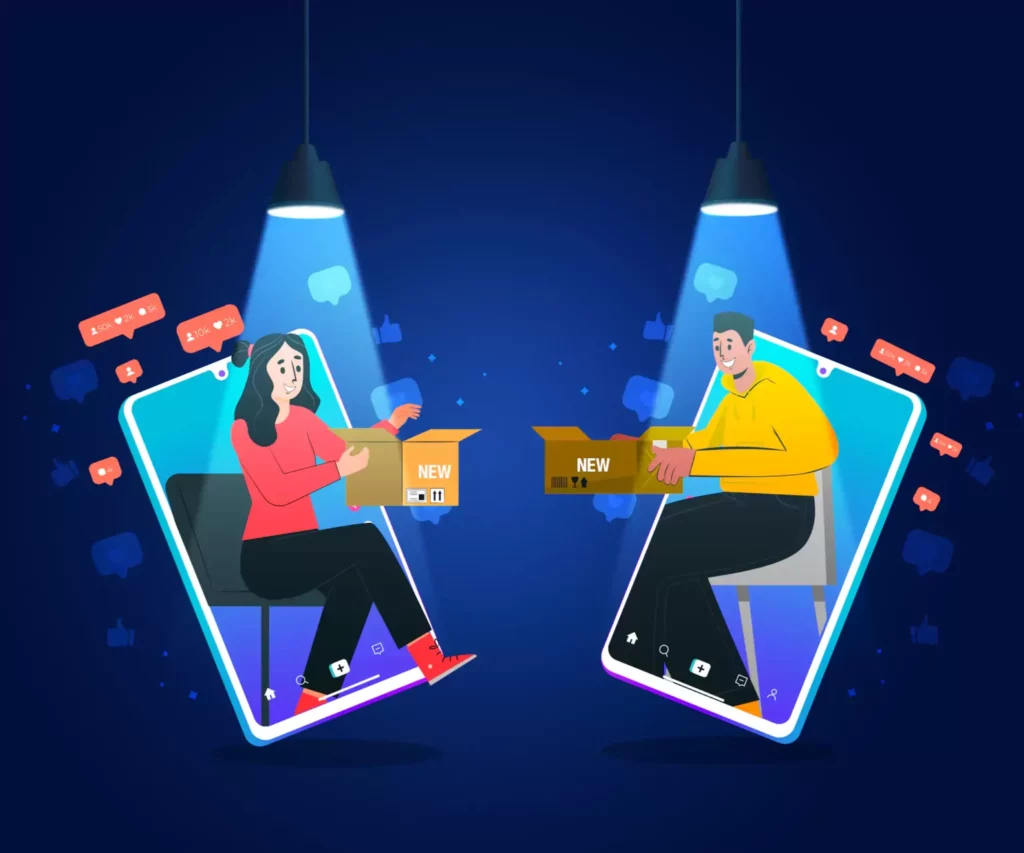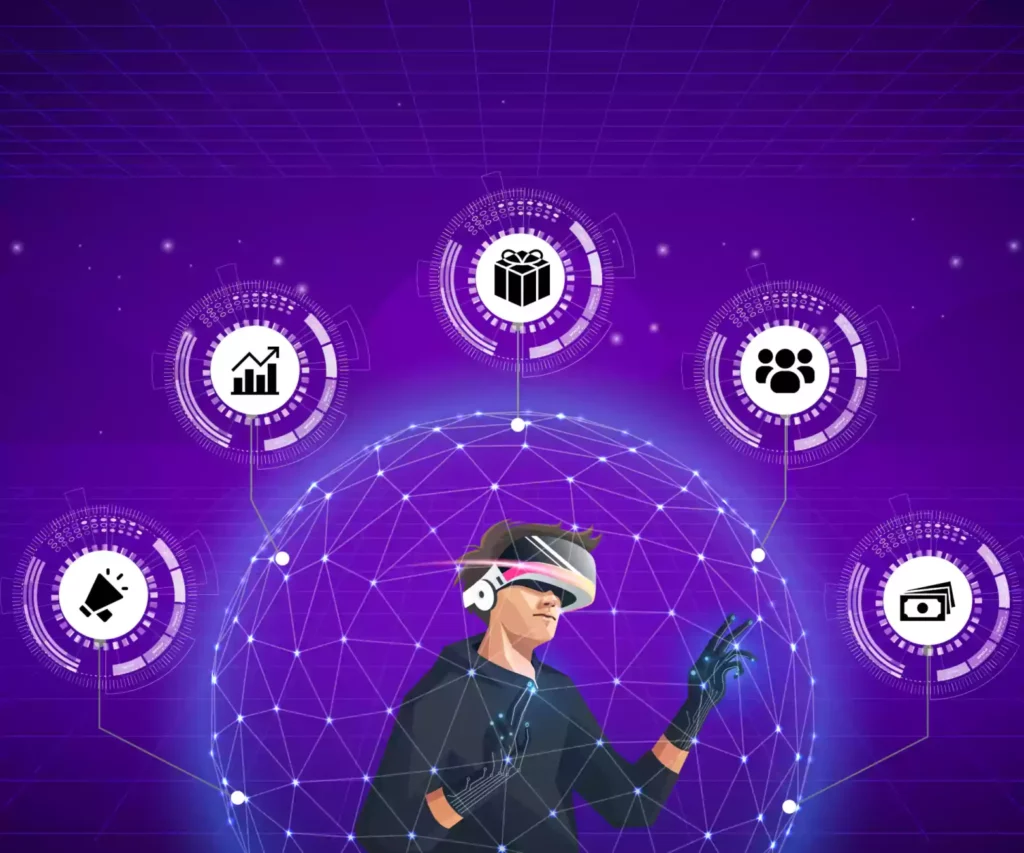
Have you stumbled upon new features from social media apps where you can send a “view only once” message? Perhaps you’ve heard of it as its alias: ‘disappearing messages’. Social media creators have grown accustomed to making content that is here one second and then gone the next. This form of content, known as ephemeral media, has a powerful impact on viewers when used correctly. In this article, we’ll explore the concept of ephemeral content in detail, including its rise in popularity and why it’s crucial for any social media creator to understand.
The rise of ephemeral content
Today’s digital age has made content development a crucial component of marketing strategy. As a result, companies always seek the latest solutions to creating and sharing content that will engage their market segment. Ephemeral content is the newest form of this type of content.
Ephemeral content is accessible for just a brief time, usually 24 hours. This type of content is temporary, and once it expires, it completely disappears. You can find this content on social media sites like Facebook, Instagram, and Snapchat, where users can post live video streams, disappearing messages, and stories. It has gained significant popularity in recent years due to its unique nature. Unlike traditional content, ephemeral content creates a unique sense of urgency and exclusivity for the audience. This sense of exclusivity has made it a popular choice among brands looking to engage with their audience and create a buzz around their products or services.
Types of ephemeral content
Ephemeral content takes on an array of formats:
- Stories allow users to share their experiences with their followers by compiling a collection of photographs or videos accessible for 24 hours. WhatsApp, Instagram, Snapchat, Facebook, and LinkedIn currently offer this format.
- Disappearing messages provide users with a sense of privacy and immediacy. This feature is available on WhatsApp, Instagram, and Snapchat.
- Live video lets users broadcast to their viewers in real-time and promotes engagement. You can find this format of ephemeral content on Instagram, Tiktok, LinkedIn, Facebook & Youtube.
How to create quality ephemeral content
Prioritising engagement and the elusiveness factor is essential while creating successful ephemeral content. It is, after all, built on the marketing psychology of scarcity bias (where we gravitate towards rare and fleeting things) and FOMO. Before developing material that appeals to the target audience, it is crucial to ascertain who they are and what interests them. Then, by providing limited-time incentives or behind-the-scenes access to special events, you may capitalise on the urgency of it.
Making ephemeral content work
The critical approach should be to convey that a great opportunity is barely within reach and can recede soon. Use phrases like “limited time only” or “exclusive access” and seek multichannel promotions. Then, increase its exposure by sending it to your subscribers via email, posting it on your social media pages, and adopting influencer marketing. Marketing it through several means will broaden its audience and guarantee that your intended audience sees it.
Challenges and risks
The low engagement and limited reach of ephemeral content are real possibilities. It has the potential to be fascinating, but there is also a chance that it will be underwhelming and reach only a limited audience. Furthermore, the content may not achieve the required level of engagement if it is poorly executed or does not appeal to the target demographic. Even with deep research and insights into user behaviour on social media, there is no certainty that the content will make it to a suitable viewer within the restricted time. As such, the quality that makes ephemeral content unique can also be its fatal flaw.
The success rate
Social media platforms have been hugely influential in promoting ephemeral content. Let’s look at some examples of how popular brands have used this content:
- Snapchat and Taco Bell partnered to advertise the release of their new Beefy Crunch Burrito through a series of Snapchat stories. Taco Bell also announced this through other social media platforms to invite users to ‘add’ them on Snapchat. They advertised the news of the product as a ‘secret’ that users could become privy to if they connected with Taco Bell within the next day. The interactive feature of this marketing strategy generated hype for the launch and increased viewer engagement.
- Red Bull used Instagram Stories to highlight extreme sports competitions and give followers a sense of exclusivity. Airbnb also used the ‘sound-on’ feature of Instagram Stories, which showcased local guides, as they fostered a feeling of exclusivity and engagement. Using 15-second videos to showcase the diverse experiences that travellers gained, Airbnb created a great buzz. These stories went along with their ‘Trips with Airbnb’, which promoted travel adventures in addition to accommodation services. In this case, ephemeral advertising was successful in helping the brand launch a new business niche.
Advertising using ephemeral tools is reportedly more successful than those that remain on the page. A user is likely to ignore or close a static ad but is more likely to hold down passing content to read closely. The principle is quite close to what happens on TV news broadcasting. Even with exciting live footage on the main screen, the flashing news text that crawls at the bottom draws more eyes. The same extends to the ‘subscribe’, ‘shop’, and ‘view now’ buttons on streaming channels like YouTube.
Can ephemeral content claim a permanent place in marketing?
The nature of content creation and information processing is an ever-evolving phenomenon. Ephemeral content is the most representative of this. The Department of Marketing at Bocconi University in Italy has found that this content is more memorable among users. The same study, however, revealed that users are unhappy about its restrictive nature. This tells us that ephemeral content calls for a balancing act of digital marketing which can yield impressive results if well-maintained but also a complete let-down if not approached right.
Have you stumbled upon new features from social media apps where you can send a “view only once” message? Perhaps you’ve heard of it as its alias: ‘disappearing messages’. Social media creators have grown accustomed to making content that is here one second and then gone the next. This form of content, known as ephemeral media, has a powerful impact on viewers when used correctly. In this article, we’ll explore the concept of ephemeral content in detail, including its rise in popularity and why it’s crucial for any social media creator to understand.
The rise of ephemeral content
Today’s digital age has made content development a crucial component of marketing strategy. As a result, companies always seek the latest solutions to creating and sharing content that will engage their market segment. Ephemeral content is the newest form of this type of content.
Ephemeral content is accessible for just a brief time, usually 24 hours. This type of content is temporary, and once it expires, it completely disappears. You can find this content on social media sites like Facebook, Instagram, and Snapchat, where users can post live video streams, disappearing messages, and stories. It has gained significant popularity in recent years due to its unique nature. Unlike traditional content, ephemeral content creates a unique sense of urgency and exclusivity for the audience. This sense of exclusivity has made it a popular choice among brands looking to engage with their audience and create a buzz around their products or services.
Types of ephemeral content
Ephemeral content takes on an array of formats:
- Stories allow users to share their experiences with their followers by compiling a collection of photographs or videos accessible for 24 hours. WhatsApp, Instagram, Snapchat, Facebook, and LinkedIn currently offer this format.
- Disappearing messages provide users with a sense of privacy and immediacy. This feature is available on WhatsApp, Instagram, and Snapchat.
- Live video lets users broadcast to their viewers in real-time and promotes engagement. You can find this format of ephemeral content on Instagram, Tiktok, LinkedIn, Facebook & Youtube.
How to create quality ephemeral content
Prioritising engagement and the elusiveness factor is essential while creating successful ephemeral content. It is, after all, built on the marketing psychology of scarcity bias (where we gravitate towards rare and fleeting things) and FOMO. Before developing material that appeals to the target audience, it is crucial to ascertain who they are and what interests them. Then, by providing limited-time incentives or behind-the-scenes access to special events, you may capitalise on the urgency of it.
Making ephemeral content work
The critical approach should be to convey that a great opportunity is barely within reach and can recede soon. Use phrases like “limited time only” or “exclusive access” and seek multichannel promotions. Then, increase its exposure by sending it to your subscribers via email, posting it on your social media pages, and adopting influencer marketing. Marketing it through several means will broaden its audience and guarantee that your intended audience sees it.
Challenges and risks
The low engagement and limited reach of ephemeral content are real possibilities. It has the potential to be fascinating, but there is also a chance that it will be underwhelming and reach only a limited audience. Furthermore, the content may not achieve the required level of engagement if it is poorly executed or does not appeal to the target demographic. Even with deep research and insights into user behaviour on social media, there is no certainty that the content will make it to a suitable viewer within the restricted time. As such, the quality that makes ephemeral content unique can also be its fatal flaw.
The success rate
Social media platforms have been hugely influential in promoting ephemeral content. Let’s look at some examples of how popular brands have used this content:
- Snapchat and Taco Bell partnered to advertise the release of their new Beefy Crunch Burrito through a series of Snapchat stories. Taco Bell also announced this through other social media platforms to invite users to ‘add’ them on Snapchat. They advertised the news of the product as a ‘secret’ that users could become privy to if they connected with Taco Bell within the next day. The interactive feature of this marketing strategy generated hype for the launch and increased viewer engagement.
- Red Bull used Instagram Stories to highlight extreme sports competitions and give followers a sense of exclusivity. Airbnb also used the ‘sound-on’ feature of Instagram Stories, which showcased local guides, as they fostered a feeling of exclusivity and engagement. Using 15-second videos to showcase the diverse experiences that travellers gained, Airbnb created a great buzz. These stories went along with their ‘Trips with Airbnb’, which promoted travel adventures in addition to accommodation services. In this case, ephemeral advertising was successful in helping the brand launch a new business niche.
Advertising using ephemeral tools is reportedly more successful than those that remain on the page. A user is likely to ignore or close a static ad but is more likely to hold down passing content to read closely. The principle is quite close to what happens on TV news broadcasting. Even with exciting live footage on the main screen, the flashing news text that crawls at the bottom draws more eyes. The same extends to the ‘subscribe’, ‘shop’, and ‘view now’ buttons on streaming channels like YouTube, which disappear after a few seconds as well.
Can ephemeral content claim a permanent place in marketing?
The nature of content creation and information processing is an ever-evolving phenomenon. Ephemeral content is the most representative of this. The Department of Marketing at Bocconi University in Italy has found that this content is more memorable among users. The same study, however, revealed that users are unhappy about its restrictive nature. This tells us that ephemeral content calls for a balancing act of digital marketing which can yield impressive results if well-maintained but also a complete let-down if not approached right.



